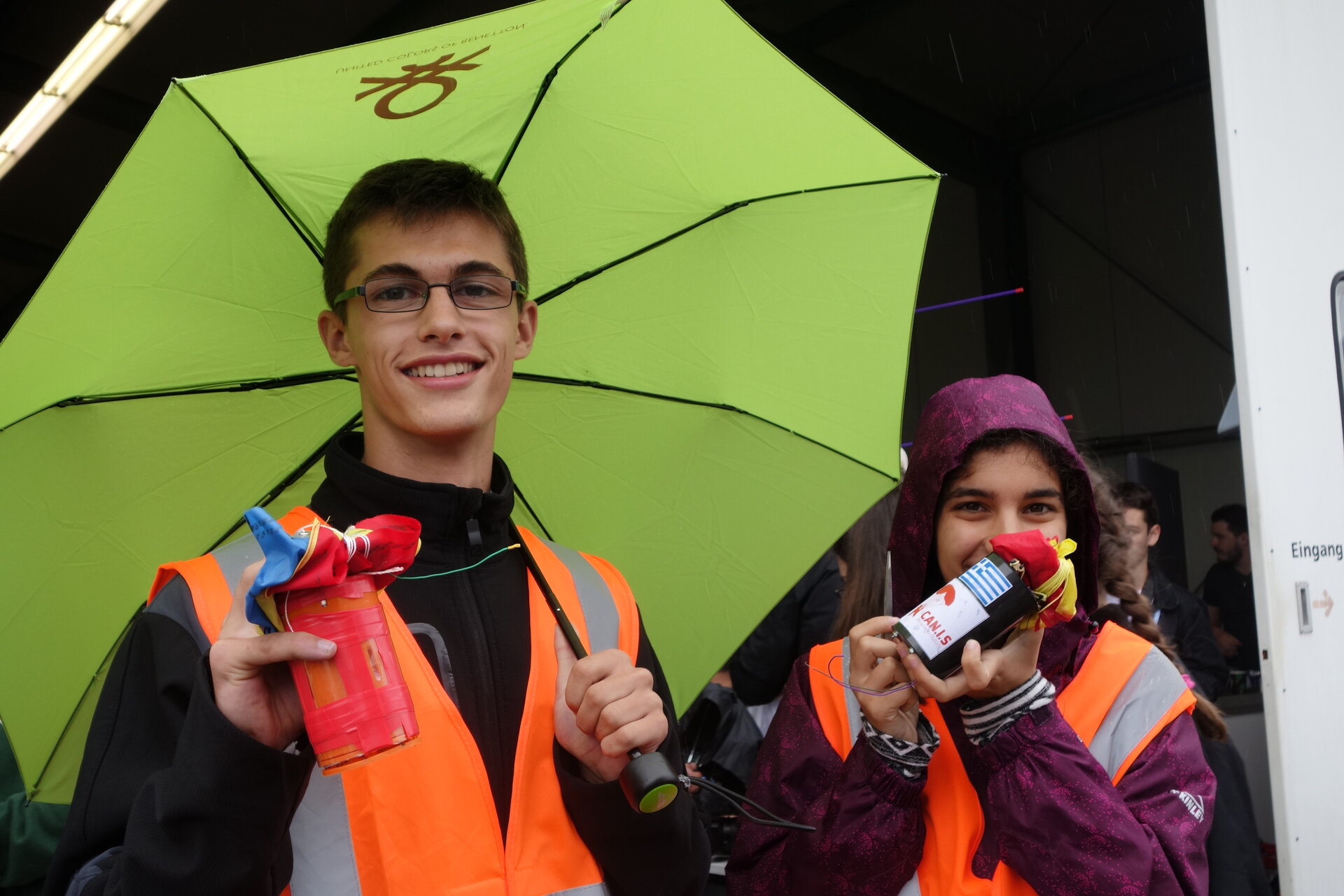Send your proposal for the 8th European CanSat Competition!
ESA’s Education Office is happy to announce the opening of the Call for Proposals for the 2018 European CanSat Competition! The competition will be held between 27 June and 1 July 2018.
This call is open to secondary school student teams (14 to 20 years old) residing in one of the following ESA Member and Associate States: Estonia, France, Hungary, Luxembourg, Switzerland, Canada, Slovenia.
You can send your proposal by filling this form in all its parts and submitting it by 10 December 2017 at 22:00 CET.
Read carefully the guidelines of the 2018 European CanSat Competition and make sure you respect the eligibility criteria! **
For the remaining ESA Member States - Austria, Belgium, Czech Republic, Denmark, Germany, Greece, Ireland, Italy, the Netherlands, Nordic countries(Norway-Sweden-Finland), Poland, Portugal, Romania, Spain, and the UK - ESA will automatically accept the winning team of the respective national CanSat competition.
For details of your national competition, visit this page.
What is the CanSat challenge?
CanSat is an educational project that seeks to teach STEM disciplines using space as their context. The challenge is simple: can you build a satellite that fits into a soft drink can? If you like challenges, then get moving! Gather a team of 4 to 6 classmates, find a teacher that is as motivated as you are, and you’re set!

The participating teams will be involved in a real scientific project. They will have to design a CanSat prototype, test it, perform a mission, and gather and analyse the data.
A CanSat contains all the major subsystems of a real satellite, such as power and communications. The only difference is that it won’t go into orbit. It will be launched on a rocket that will travel up to an altitude of 1 km, deploy its parachute, and land safely. The CanSats must perform a primary mission, which consists of transmitting data of temperature and pressure measurements, and a secondary mission, which is up to your imagination.
We are looking forward to receiving your proposals!
Need inspiration?
Some of last year’s most impressive missions include:
1st prize: La Burgoneta Espacial (Country: Spain; School: IES El Burgo de las Rozas, Madrid)
The team’s mission consisted in finding a planet that could sustain human life (measuring UV radiation and CO2), getting information from the topographic survey to choose the right landing spot for future missions, and broadcasting live mission information to the general public (video and telemetry data).
2nd prize: Canny Potter (Country: Ireland; School: St Columba’s College, Dublin)
The primary objective of the team’s mission was to gather essential data on descent through the atmosphere and evaluate the data in terms of abiotic factors which are key enablers for the existence of life, such as suitable temperature, pressure, and moisture content. Terrestrial evaluation would be used as a guide for the development of a probe suitable for launch on the moons of the outer solar system.
-
3rd prize: CANpernicus (Country: Poland; School: ZS UMK Gimnazjum i Liceum Akademickie, Toruń)
The team’s main goal was to determine the possibility of life on a planet, or, in other words, to find conditions similar to the Earth’s. They checked for conditions most suitable for life as we know it, and in order to do so they measured humidity, light intensity, magnetic field intensity, and CO2 concentration.
Each student team shall comprise a minimum of 4 (required) to a maximum of 6 students (aged 14 - 20) residing in an ESA Member or Associate State*, and respecting one of the following conditions:
a) Team of students enrolled full-time in a secondary school.
b) Team of students in home schooling condition (certified by the National Ministry of Education or delegated authority).
c) Team of members of a social club enrolled full-time in a secondary school.- At least 50% of the students included in a team must be nationals of an ESA Member or Associate State.
- University/higher education students cannot participate in this competition.
- Each team needs to be supervised by a teacher or mentor (Team Leader) responsible for monitoring the team’s technical progress, offering help and advice, and acting as the team’s point of contact with ESA’s Education Office. The Team Leader must be available to accompany the team to the competition launch campaign.
- One teacher/mentor can be responsible for one team per year only. One teacher/ mentor cannot present the same team more than once.
- Student teams’ participation in the European CanSat Competition is only allowed once (no individual student can participate more than once).




